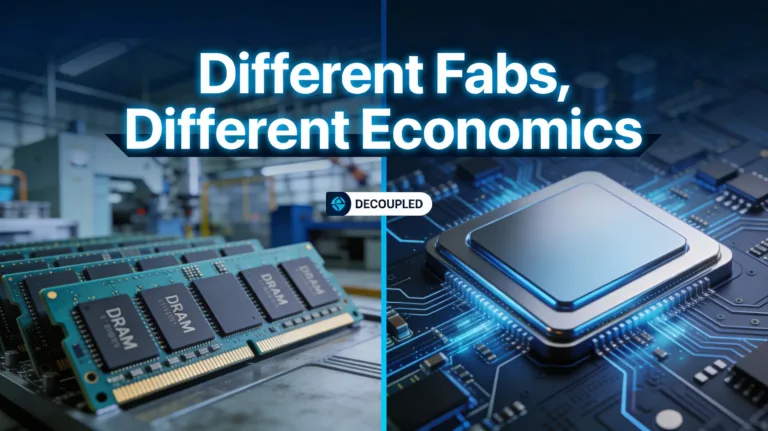Key Insights
- The United States and Japan signed the Technology Prosperity Deal on October 28, 2025, advancing collaboration in high-performance computing and leading-edge semiconductor technologies
- The agreement builds on the existing $550 billion U.S.-Japan trade framework established in July 2025, deepening cooperation in critical chip manufacturing and supply chain resilience
- Industry analysts and policymakers welcome the deal as a strategic move toward securing semiconductor supply chains and fostering innovation through joint research and workforce development initiatives
On October 28, 2025, the United States and Japan formalized a groundbreaking Technology Prosperity Deal in Tokyo, marking a significant milestone in bilateral cooperation on advanced semiconductor technologies and high-performance computing. This agreement represents the latest evolution in the U.S.-Japan strategic partnership, building upon the comprehensive trade framework announced in July 2025 that secured $550 billion in Japanese investment into critical American industries. The Technology Prosperity Deal specifically targets leading-edge semiconductor development, joint research initiatives, workforce training programs, and supply chain security—critical elements for maintaining technological leadership in an increasingly competitive global landscape.
The timing of this semiconductor-focused agreement is particularly strategic, coming just three months after the broader U.S.-Japan trade deal implementation in September 2025. According to the White House, the Technology Prosperity Deal aims to deepen cooperation in high-performance computing, leading-edge semiconductor technologies, and quantum computing that underpin artificial intelligence and national security applications. This bilateral framework addresses growing concerns about semiconductor supply chain vulnerabilities while positioning both nations as leaders in next-generation chip innovation.
Building on the July 2025 Trade Framework
The Technology Prosperity Deal represents a natural extension of the comprehensive U.S.-Japan Strategic Trade and Investment Agreement announced on July 22, 2025. That landmark agreement, which President Trump described as potentially “the largest deal in history,” established a $550 billion investment fund directed toward rebuilding and expanding core American industries. According to analysis from the Washington International Trade Association, the fund utilizes a combination of equity, credit guarantees, and funding from Japanese public finance institutions such as Nippon Export and Investment Insurance (NEXI) and Japan Bank for International Cooperation (JBIC), specifically targeting semiconductors, energy, critical minerals, pharmaceuticals, and other strategic sectors.
The semiconductor industry was central to the July framework, with Japan committing to bolster U.S. manufacturing capacity through loans and guarantees. This investment aligns with U.S. efforts to reduce reliance on foreign supply chains, particularly for AI and high-performance computing applications. The agreement includes a critical safety clause ensuring Japan receives the lowest negotiated tariff rates for semiconductors, even if other nations secure lower terms—providing predictability that reduces trade risk for Japanese exporters and enables long-term capital allocation strategies.
The July trade agreement also established a baseline 15% tariff rate for most Japanese imports, with sector-specific treatment for various products. As detailed by TecEx, Japanese goods with existing rates below 15% face additional ad valorem rates to reach that threshold, while products already facing tariffs over 15% see no additional duties. Critically for the semiconductor sector, U.S. rates on Japanese autos decreased to 15%, and Japan agreed to lift regulatory restrictions on U.S. automobiles—creating a more balanced trade environment that facilitates deeper industrial cooperation.
Strategic Benefits of Technology Prosperity Deal for Semiconductor Manufacturing
The Technology Prosperity Deal signed on October 28, 2025, creates substantial opportunities for both American and Japanese semiconductor companies. Japanese firms like Tokyo Electron and Renesas stand to benefit significantly from provisions that encourage co-investment in American manufacturing facilities. This approach mirrors the successful model established by TSMC’s U.S. expansions, where foreign semiconductor leaders establish domestic production capacity while maintaining technological expertise.
Regulatory harmonization represents another crucial component of the bilateral semiconductor strategy. The broader trade framework aims to streamline compliance by reducing duplicate testing requirements and aligning standards over a 48-month period. For Japanese semiconductor manufacturers that have historically faced stringent U.S. export controls, this harmonization reduces operational friction and compliance costs. While the Trump administration has tightened restrictions on advanced chip exports to China, the focus on U.S. domestic production through the Technology Prosperity Deal incentivizes Japanese firms to establish American operations—enhancing Japan’s technological edge while securing reliable market access.
The deal’s emphasis on workforce development addresses a critical bottleneck in semiconductor manufacturing. Both nations recognize that expanding chip production capacity requires not just capital investment but also skilled technicians, engineers, and researchers. Joint training programs and educational initiatives outlined in the Technology Prosperity Deal will help build the human capital necessary to support next-generation semiconductor fabrication facilities on both sides of the Pacific.
For investors and industry stakeholders, the Technology Prosperity Deal signals that companies leveraging U.S.-Japan co-investments in semiconductor manufacturing will gain competitive advantages. The agreement provides predictable trade terms through tariff safeguards while aligning with U.S. supply chain resilience goals—creating an environment where strategic partnerships can flourish. Japanese semiconductor equipment manufacturers and chip designers that establish American production partnerships position themselves favorably within this new framework.
Supply Chain Resilience and Economic Security : Cornerstone of Technology Prosperity Deal
Supply chain security forms the cornerstone of the Technology Prosperity Deal’s strategic vision. Recent global disruptions have highlighted dangerous vulnerabilities in semiconductor supply chains, where production concentration in specific geographic regions creates systemic risks. The U.S.-Japan agreement addresses these concerns by promoting distributed manufacturing capacity across both nations while maintaining technological leadership in cutting-edge chip design and production.
The $550 billion investment framework established in July 2025 provides the financial foundation for this supply chain diversification. Resources flow toward expanding domestic semiconductor fabrication capacity, developing critical mineral supply chains, and building resilient manufacturing ecosystems. According to industry analysis, the agreement aims to stabilize supply chains while fostering strategic alignment between the two nations on technology standards and export controls.
The Technology Prosperity Deal’s focus on quantum computing and high-performance computing extends beyond immediate supply chain concerns to address long-term technological competitiveness. These emerging technologies require substantial research investments, specialized manufacturing capabilities, and robust intellectual property frameworks. By coordinating research efforts and sharing technological advances, the U.S. and Japan can accelerate development timelines while maintaining security over sensitive innovations.
Economic security considerations also drive the agreement’s emphasis on semiconductor cooperation. Advanced chips power everything from artificial intelligence systems to military applications, making semiconductor technology a matter of national security. The bilateral framework ensures that both nations maintain technological sovereignty while benefiting from complementary strengths—American innovation ecosystems combined with Japanese manufacturing precision and quality control expertise.
Industry and Policy Response
The Technology Prosperity Deal has generated positive responses from industry analysts, policymakers, and business leaders in both nations. Industry observers welcome the agreement as a significant step toward securing semiconductor supply chains and fostering innovation in critical technology sectors. Early commentary from Japanese regional business outlets highlights optimism about increased investment and job creation opportunities resulting from expanded bilateral cooperation.
U.S. tech policy experts particularly note the importance of workforce development initiatives included in the agreement. These programs address a fundamental challenge facing semiconductor manufacturing expansion: the shortage of skilled workers capable of operating advanced fabrication facilities. By establishing joint training programs and educational partnerships, the Technology Prosperity Deal creates pathways for developing the human capital necessary to support ambitious manufacturing expansion goals.
The agreement also resonates with broader geopolitical considerations. As the United States seeks to reduce dependence on semiconductor supply chains concentrated in regions of geopolitical tension, partnerships with trusted allies like Japan become strategically essential. The Technology Prosperity Deal demonstrates how bilateral cooperation can advance both economic and security objectives simultaneously—creating resilient supply chains while maintaining technological leadership against strategic competitors.
For semiconductor companies, the deal provides regulatory clarity and investment predictability that enables long-term strategic planning. The combination of tariff protections, regulatory harmonization, and substantial capital commitments creates an environment where companies can confidently invest in new manufacturing capacity and research initiatives. This stability contrasts sharply with the uncertainty that characterized U.S.-Japan trade relations in earlier periods.
Comparing Pharmaceutical and Semiconductor Provisions
While the Technology Prosperity Deal emphasizes semiconductor cooperation, it’s worth noting how the broader U.S.-Japan trade framework treats different sectors. The July 2025 agreement addressed both semiconductors and pharmaceuticals, though with notably different approaches reflecting each industry’s unique characteristics and challenges.
Pharmaceutical firms benefit from 15% tariff exemptions for generics under the current framework, but face potential 200% tariff increases by 2026 unless they diversify production strategies. This creates pressure for pharmaceutical companies to establish American manufacturing capacity or face substantial cost increases. The approach reflects U.S. policy goals of onshoring critical pharmaceutical production while maintaining access to affordable generic medications.
In contrast, semiconductor provisions focus more heavily on co-investment and technology development rather than purely tariff-based incentives. The Technology Prosperity Deal emphasizes joint research, shared manufacturing facilities, and collaborative workforce development—recognizing that semiconductor leadership requires sustained innovation rather than simple production capacity. This distinction highlights how the bilateral framework adapts sector-specific strategies to achieve broader economic security objectives.
Both sectors benefit from regulatory harmonization efforts that reduce compliance burdens and streamline approval processes. However, the semiconductor focus on cutting-edge technology development and supply chain resilience reflects the strategic importance of advanced chips to both economic competitiveness and national security. The Joint Statement on the Framework Agreement released on July 22, 2025, confirmed that for any future Section 232 tariffs imposed on pharmaceuticals and semiconductors, Japan will receive a rate no greater than that applied to any other country—providing important reassurance for long-term planning.
Regional Economic Impact and Future Outlook
The Technology Prosperity Deal’s regional impact extends beyond semiconductor manufacturing to encompass broader economic development opportunities. Japanese regions with existing semiconductor industry clusters stand to benefit from increased investment and expanded production capacity. Similarly, American states hosting semiconductor fabrication facilities will see job creation and economic growth as bilateral partnerships materialize into concrete projects.
The agreement’s emphasis on clean energy vehicle introduction promotion subsidies for U.S. cars, as mentioned in the Joint Statement, demonstrates how semiconductor cooperation connects to broader industrial policy goals. Modern electric vehicles rely heavily on advanced semiconductors for battery management, autonomous driving features, and vehicle connectivity. By coordinating on both semiconductor development and clean energy vehicle promotion, the U.S. and Japan create synergies that amplify the impact of bilateral cooperation.
Looking forward, the Technology Prosperity Deal establishes a framework that can evolve with technological advances and changing strategic priorities. The 48-month timeline for regulatory harmonization provides a structured pathway for reducing trade friction while maintaining appropriate safety and security standards. As quantum computing and artificial intelligence technologies mature, the bilateral framework can adapt to address new challenges and opportunities in these emerging fields.
For stakeholders tracking the agreement’s implementation, key metrics will include the pace of new semiconductor facility construction, workforce training program enrollment, and joint research project launches. The $550 billion investment commitment provides substantial resources, but translating financial commitments into operational manufacturing capacity and technological breakthroughs requires sustained effort and coordination between government agencies, private companies, and research institutions.
The U.S.-Japan Technology Prosperity Deal represents more than a bilateral trade agreement—it embodies a strategic vision for maintaining technological leadership in an era of great power competition and supply chain uncertainty. By combining substantial financial commitments, regulatory harmonization, workforce development, and joint research initiatives, the agreement creates conditions for sustained innovation and resilient supply chains in the semiconductor sector. As implementation proceeds, the deal will serve as a model for how allied nations can coordinate on critical technology development while advancing shared economic and security objectives.
Stay connected with the latest developments in technology and trade policy by joining our WireUnwired Research WhatsApp group for real-time discussions, or connect with industry professionals through our WireUnwired Research LinkedIn community for in-depth analysis and networking opportunities.
Discover more from WireUnwired Research
Subscribe to get the latest posts sent to your email.




